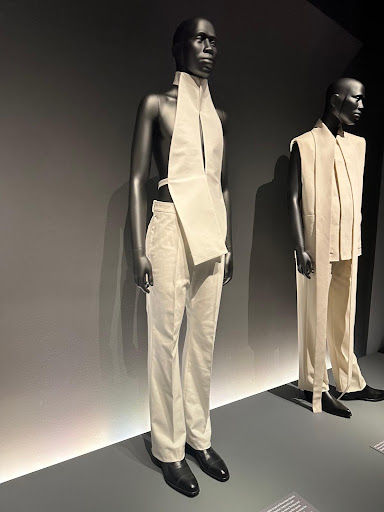The Met Gala: Balancing Glamour and History
- Chez Nous Times

- Oct 30
- 3 min read
Updated: Oct 31
By Daphne Tsarnas '26
Dandyism: an intriguing word I hadn’t heard prior to this year. When the theme of the 2025 Met Gala, arguably my favorite night of the year, was announced, I was puzzled but largely intrigued. I spent the following week delving into the origins of this term and style, as well as its influence on the current fashion scene. By the time May came around, I was more excited for celebrities to step on the red carpet than ever before.
Dandyism, which emerged in the eighteenth century, is so much more than a style of fashion. Particularly in the nineteenth century when the concept originated, it was a

flourishing social movement that served as a blatant rejection of the classic British aristocratic attire: the exaggerated powder wigs, massive fur capes with extensive trains, and embellished gowns that could sometimes weigh double than the woman wearing it. At its core, dandyism is everything this notable style is not, being characterized by sharp tailoring, restraint in the use of overwhelming patterns, and understated colors like black and gray. By approaching what it means to be “elite” from an entirely different lens, this movement redefined what truly signifies wealth.
In today’s world, aspects of dandyism are sometimes overlooked, yet are firmly rooted in the world of fashion. Those who can afford to purchase clothes from designer brands with instantly recognizable logos plastered across the item often do, an act that has evolved into a clear sign of luxury. On the other hand, it is just as accurate to say that the wealthiest people support the opposite perspective, investing in the most simple looking clothing that is, in actuality, extremely costly, in a subconscious attempt to play down their affluence. Both of these approaches to showcasing wealth in a material sense are reflected in the facets of dandyism.
It is almost ironic to see The Met Gala, which is commonly critiqued for its over-the-

top extravagance and rigid exclusivity, shine a light on dandyism and its inherent subtlety and toned-down nature. It raises the question of who was really meant to be appreciated through the event, the celebrities walking across the carpet or the underrepresented African-American originators of the social movement who the celebrities were embodying. In my eyes, the answer is both.
In the age of fame being a sought-after commodity, A-List actors, singers, and models are those who are constantly filmed and emulated by people across the world. Due to this societal truth, celebrities honoring dandyism on a celebrated televised program is a brilliant way to expose American society to its own country’s rich history.
One of the most poignant moments of the night was an interview of supermodel Gigi Hadid, who couldn’t help but gush about her opulent gold gown inspired by the works of Zelda Wynn Valdes, an African-American tailor praised for her creations made for performer Josephine Baker. Hadid was evidently well-versed on the origins of her look, which only helped to bolster the significance of dandyism in the modern era.

As a lover of all things history and fashion, I had to check out the exhibit for myself. From seeing garments once worn by American slaves that encapsulated both European influences and the institution’s sinister past, to ornate athleisure made for WNBA stars, to elaborate neon pieces by late Ghanaian-American designer Virgil Abloh, I was in awe. The exhibit is open until October 26th, and I highly recommend you witness the beauty for yourself.
All Photos Courtesy of Daphne Tsarnas '26
Edited by Kavya Chacko '26, Catherine Polatidis '26 & Ms. Brilliant
Fair Use Disclaimer
The images and contents in this article are under Fair Use: Copyright Disclaimer Under Section 107 of the Copyright Act in 1976; Allowance is made for "Fair Use" for purposes such as criticism, comment, news reporting, teaching, scholarship, and research. Fair use is a use permitted by copyright statute that might otherwise be infringing. Non-profit, educational or personal use tips the balance in favor of fair use. All rights and credit go directly to its rightful owners. No copyright infringement intended.




Comments